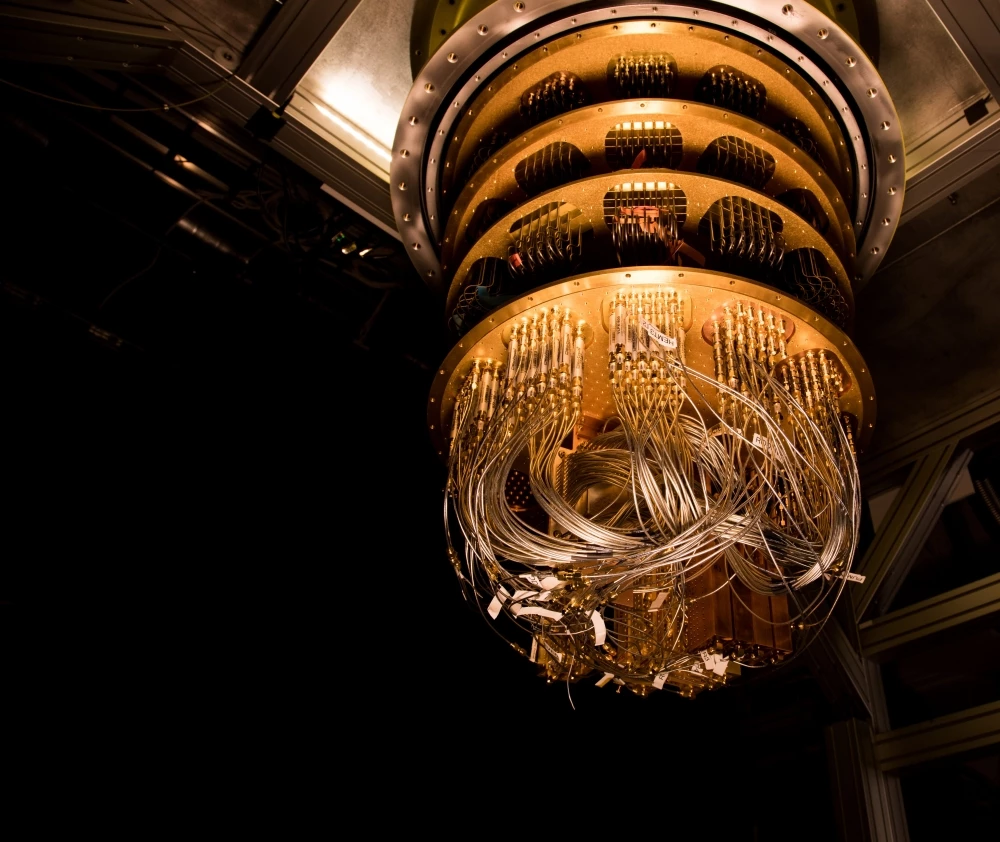Google has announced that it has achieved “quantum supremacy” – the point where a quantum computer successfully performs an operation considered impossible for traditional computers. This event has long been predicted as an important milestone in the development of quantum computers, but rival IBM disagrees that quantum supremacy has been achieved at all.
At the heart of Google’s bold claims is Sycamore, a powerful quantum computer chip. The company says that Sycamore has performed a specific computation in 200 seconds (or three minutes and 20 seconds) which would take the Summit supercomputer – currently the most powerful in the world – about 10,000 years to complete.
IBM, meanwhile, refines that 10,000-year estimate down to about two and a half days. The company isn’t disputing that Sycamore performed the impressive operation – instead, it’s arguing that the task isn’t out of reach of classical computers, and therefore doesn’t represent quantum supremacy.
Quantum vs classical
In classical computers – the kind we’ve been using for the better part of a century – information is stored and processed in bits, as either a zero or a one. Quantum computers, meanwhile, aren’t so binary. A quantum bit (or qubit) can not only be a zero or a one, but both at the same time. That raises the processing power exponentially – two qubits can be in four possible states, while three qubits represent eight (23) states, and so on.
By taking advantage of the “spooky” rules of quantum mechanics, quantum computers look set to be the next generation, tackling problems that would stump even the most powerful classical supercomputers. And that’s what Google is now claiming to have achieved.
Quantum supremacy
Over the past few years, quantum computers have been put to work solving problems that classical computers could still solve, given enough time. In many cases quantum computers can perform them much faster, but the true test of their abilities would be when they could do things that no classical computer could, in a reasonable timeframe. This turning point was dubbed “quantum supremacy” by John Preskill in 2012.
Since then, demonstrating quantum supremacy has been a major goal for quantum computer researchers at companies like Google, IBM, and Intel, as well as university teams. And now, Google claims to have done just that.

The experiment
The Sycamore chip is made up of 54 qubits, and in this experiment a team of scientists from Google and the University of California Santa Barbara (UCSB) used 53 of those – one didn’t perform for whatever reason.
These 53 qubits were entangled into a random, complex superposition state, which produces a specific binary number output, called a “bitstring.” The quantum computer can quickly calculate the probability of each bitstring coming out by measuring the qubits a million times in those 200 seconds.
Sycamore can do that so quickly because its qubits allow it to process huge amounts of data simultaneously. Classical computers, on the other hand, would have to go through each of the quadrillions of possible states one by one – a process that the team estimates would take roughly 10,000 years in this case.
Since that’s not a feasible amount of time for any real classical computer, Google declared the experiment successful in achieving quantum supremacy.
The counter-argument
But according to IBM, those results aren’t quite as groundbreaking as they may seem. The rival company acknowledges the impressiveness of the Sycamore system, but has far more faith in the abilities of classical supercomputers to keep up.
“We argue that an ideal simulation of the same task can be performed on a classical system in 2.5 days and with far greater fidelity,” IBM wrote in a blog post. While Sycamore’s 200 seconds still fares much better than Summit’s 60-odd hours, that timeframe isn’t unheard of in the world of supercomputers, meaning the quantum supremacy “threshold has not been met.”
The core of the counter-argument is Google’s assumption there isn’t enough RAM available for conventional supercomputers to store the entire range of possible states at once. Therefore, these computers would need to go through them one by one – finishing up around the year 12019.
But, IBM says, that calculation is ignoring another readily-available component of classical computers that could help out – regular old disk storage. The team says that by using both RAM and hard drive space to store and manipulate the data – as well as a range of other classical performance-enhancing techniques – the job can be done in two and a half days.
IBM also says that quantum supremacy as a goal is a bit flawed. After all, quantum computers still have their own issues, particularly with errors and stability, and will likely never completely replace the classical variety.

“Google’s experiment is an excellent demonstration of the progress in superconducting-based quantum computing, showing state-of-the-art gate fidelities on a 53-qubit device, but it should not be viewed as proof that quantum computers are ‘supreme’ over classical computers,” says IBM.
For its part, Google doesn’t seem too fazed by IBM’s blows. In a press call with New Scientist, researcher John Martinis encourages the IBM team to actually go and test their algorithm on the Summit supercomputer and see if it works. It’s one thing to hypothesize, but it’s another entirely to put it into action.
Whether it truly represents quantum supremacy or not, Google’s achievement is still an impressive one, and will likely be thought of as a major milestone in the development of quantum computing.
Google’s results were published in the journal Nature, while IBM’s study is currently available on arXiv.





